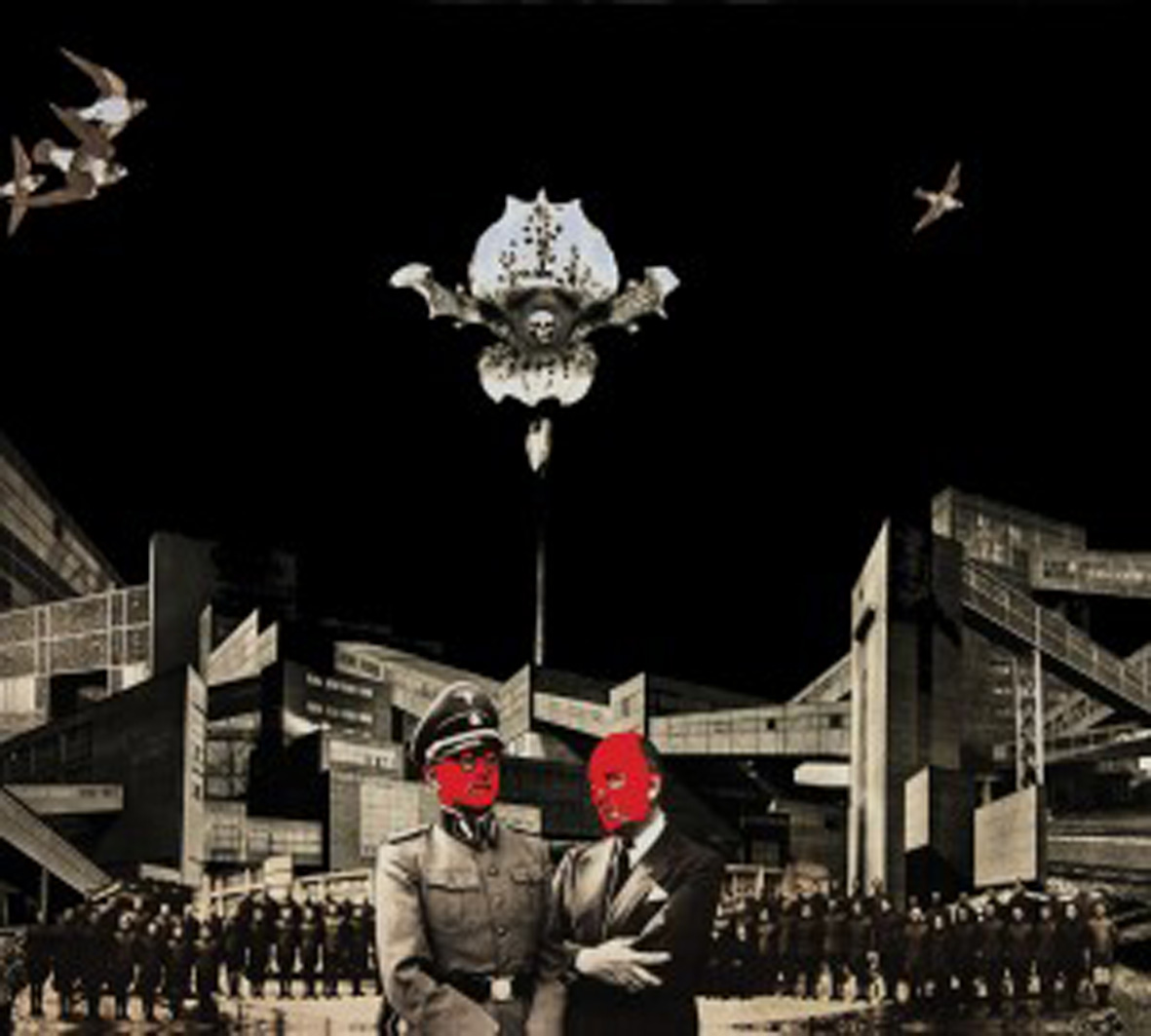Nurse With Wound, "The Great Ecstasy of the Basic Corrupt"
 This is a long-awaited CD reissue of a largely unheard 45 RPM art edition LP from 2014. Although the idea of getting a small Steven Stapleton painting with an album was certainly appealing at the time, I was understandably a bit apprehensive about buying an expensive album that could easily turn out to just be a bunch of regurgitated studio scraps or live recordings.  I passed.  As it turns out, however, The Great Ecstasy was (and is) actually a surprisingly excellent and cohesive album.  More importantly, this reissue appends another great rarity to the original release in the form of Silver Bromide's "Circles of Confusion," which is one of my favorite NWW pieces in years.  Given that copies of Silver Bromide are currently going for $1500, this humble CD holds an awful lot of appeal.
This is a long-awaited CD reissue of a largely unheard 45 RPM art edition LP from 2014. Although the idea of getting a small Steven Stapleton painting with an album was certainly appealing at the time, I was understandably a bit apprehensive about buying an expensive album that could easily turn out to just be a bunch of regurgitated studio scraps or live recordings.  I passed.  As it turns out, however, The Great Ecstasy was (and is) actually a surprisingly excellent and cohesive album.  More importantly, this reissue appends another great rarity to the original release in the form of Silver Bromide's "Circles of Confusion," which is one of my favorite NWW pieces in years.  Given that copies of Silver Bromide are currently going for $1500, this humble CD holds an awful lot of appeal.
In classically cryptic Stapleton fashion, The Great Ecstasy of the Basic Corrupt offers no real information other than the track titles, but the line-up is rumored to be just Stapleton and Andrew Liles.  I am happy to accept that, as the pieces themselves do not offer much in the way of any further clues: each of these three 20-minute pieces sounds like it could stylistically be the work of a completely different band, though there is an admirable consistency in both mood and pacing that unites them.
The opening "No Meat for the Dogma" is a nice bit of menacing Eastern drone built upon a sinister-sounding two-chord bed of buzzing tambura or sitar.  It seems like Liles had an especially prominent role, as the foreground is devoted to a fitfully unfolding and surprisingly musical harpsichord solo that sounds like something an especially sensitive and melancholy vampire might play alone in his castle in one of his darker moods.  Since I cannot picture Steven Stapleton ever playing a harpsichord, he presumably focused upon the nightmarish and hallucinatory drone-blossoms that bleed together and undulate in the periphery.  It is quite a wonderful piece that would lend itself well to a La Monte Young-style marathon performance (or one of NWW’s own sleep concerts), as it feels like it could endlessly ebb and flow forever without getting boring.  The other piece from the original album, "Feed the Loathing," is a bit more minimal and understated at first, but nicely continues the theme of psychotropic droning–in fact, Coil’s Time Machines initially springs to mind as an apt reference point. The piece quickly evolves beyond its foundation of slow, hypnotic pulsing though, adding in some haunted-sounding atmospherics in the form of mysterious creaks, metallic washes and clatters, discordant chimes, and tense swells of "horror movie" synths.  Much like "Dogma," it is not exactly a structured and evolving composition so much as it is a rich, shifting, and evocative tapestry of ominous ambiance, albeit one a bit more intent on conveying an escalating sense of dread.  More than anything, "Feed the Loathing" feels like the soundtrack to a paranoid and sleepless night in a remote cabin.
Silver Bromide's "Circles of Confusion" is a different animal altogether, though it is similarly restrained and slow-burning.  The big difference is that "Circles" sounds like the work of a brilliant psych-rock band with seemingly limitless patience.  It opens with a loop of a beautifully lilting snarl of feedback that repeats several times before a simple two-note bass line chimes in to mirror it.  As with "No Meat for the Dogma," it is the kind of perfect and elegantly minimal motif that could be hypnotically repeated forever, but even more so.  Tempting as it may have been, however, Liles and Stapleton did not just leave the piece on autopilot.  Rather, they imaginatively embellish their glacially unfolding groove with a bevy of guitar-like noises worthy of Sonic Youth: clattering de-tuned strings, warbling and oscillating overtones, and some unexpectedly poignant swells of feedback.  Another big difference is the mood, as "Circles" completely eschews any sense of menace for a sustained reverie of bittersweet and dreamlike beauty. Gradually, it blossoms into a somewhat straightforward and sustain-heavy guitar solo, losing a bit of its brilliantly deconstructionist otherness, but it is still quite an all-around stellar piece.
Obviously, long-time NWW fans are going to pounce on this album regardless of what any reviews say, as both Great Ecstasy and Silver Bromide (along with Xerography) are among the most maddeningly elusive releases in NWW's entire discography.  The good news is that they will definitely not be disappointed at all when they finally hear these pieces for the first time.  I know I certainly was not.  There are admittedly some other NWW eras that I prefer to this one, but I do very much enjoy what Stapleton and his collaborators have been up to in recent years and this feels like an atypically strong and painstakingly crafted batch of songs.  I did not expect that at all for releases that were issued in such small editions.  In particular, the wonderful "Circles of Confusion" is a revelation, as it does not sound like anything else that I have yet heard from either NWW or Liles.  In fact, if it had been recorded by someone like My Bloody Valentine (not an absolutely insane stretch) as an experimental b-side tucked away on some single, it would probably be widely revered as a left-field noise-guitar masterpiece.  Thankfully, songs do not have feelings, so it is perfectly fine that "Circles" will instead lead a quiet life as an unexpected gem on an obscure but extremely satisfying NWW reissue.
Samples:
 



